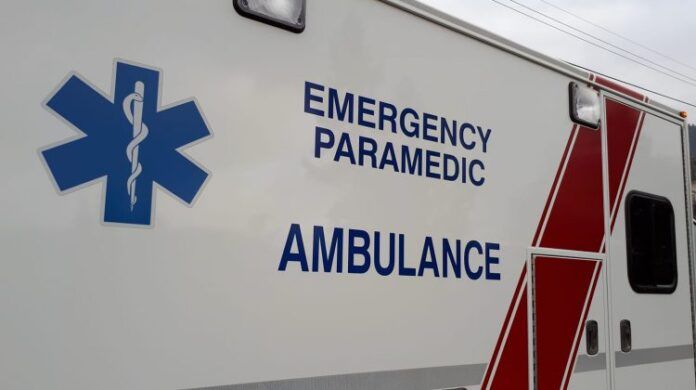Ambulance wait times in Prince George are being brought back into the spotlight after an injured Vernon Vipers player was immobilized on the ice for about 50 minutes.
During the late stages of the Vipers’ 5-1 win over the Spruce Kings at the Kopar Memorial Arena on Saturday, Will Blackburn was hit into the boards and was unable to get up under his own power.
Luckily, the Vipers received good news and that Blackburn was able to travel back with the team after being treated in hospital.
The Vernon Vipers have received good news and Will Blackburn has been cleared to rejoin the team for the trip home. Thanks to everyone who reached out.https://t.co/Q2icF0rWEf
— Vernon Vipers (@VernonVipers) October 2, 2022
Spruce Kings General Manager, Mike Hawes told MyPGNow.com the turnaround time is much quicker when staffing levels are at a regular level.
“In normal times when the staffing issues aren’t a concern with the ambulance they are usually within a 10-minute response time to our arena for an ambulance. In past years it hasn’t been a problem but the staffing problems now, it seems to be an issue.”
“Specific to hockey and other sports, sometimes injuries are a part of it. When you need first responders or an ambulance it’s good to know that they are able to respond in a timely fashion. They didn’t that night and certainly, it created some frustration.”
Ambulance Paramedics of BC President, Troy Clifford stated the lag time between when the call was made and a unit arriving is inadmissible.
“It’s unacceptable. It’s absolutely not right. People need to know that an ambulance is going to respond immediately at their time of need – that didn’t happen in this case and at the end of the day, it’s really because we don’t have enough resources.”
Clifford, who used to be an Athletic Trainer with the Salmon Arm Silverbacks of the BCHL noted it was Spruce Kings public address announcer Ron Gallo who went down to UHNBC to track down a crew that just finished another call and then went to the rink.
Clifford added the lengthy delay is a by-product of a recruitment and retention problem coupled with spiking call volumes in many communities across the province including PG.
“When you have a busy spike in calls, there is no community close enough that you can draw on for those additional resources. That’s why you are seeing those delays, I don’t know if that is the case that happened here, but clearly, there was not an ambulance readily available to respond to that call.”
In September of 2021, Clifford spoke with MyPGNow.com over the need to desperately change the $2-per-hour on-call model – an issue that has yet to be fixed over a year later.
Simply put, until the on-call model receives a major facelift, too many ambulances across the province will be stuck in the park due to staffing shortages.
“We have too many ambulances parked without staff. Right now, we have 30, 40 and sometimes 50% of the time we have ambulances not staffed because we don’t have physical paramedics to do the job,” added Clifford.
“We need to staff additional ambulances by bringing in people on overtime rates or premium rates and adding additional full-time positions where we can recruit from our on-call members and train new people in.”
According to Clifford, the full-time wages and benefits package for medics in BC are currently 30% behind other first responders like firefighters, police officers, and other health care workers.
“When you are not competitive, people are going to make choices where they can go where they can. We are seeing increased mental health injuries by paramedics who are off working more and more. So, these are the things that are causing this along with increased call volumes.”
BC Emergency Health Services (BCEHS) issued the following statement to MyPGNow.com.
We can confirm BCEHS received a call at 9:24 pm on Saturday, Oct 1 to respond to a patient at the Kopar Memorial Arena in Prince George. The call was triaged in our dispatch centre as a “Yellow” call, which is a non-lights and sirens ambulance response.
At 10 p.m., based on new information about the patient’s condition from the scene, the call was upgraded to an “Orange” call, a more urgent lights and sirens response and the ambulance arrived at 10:07 pm.
We know it’s stressful when someone who needs an ambulance is waiting for one. As part of our standard process, BCEHS aims to dispatch the closest available ambulance. BCEHS prioritizes ambulance calls based on the information received from the caller and the Medical Priority Dispatch System, an internationally recognized system used around the world. Together with the Clinical Response Model, a colour-coded system that better matches resources to patient conditions, patients reported having life-threatening symptoms including cardiac arrest, chest pain, breathing difficulties, and severe bleeding or unconsciousness are prioritized. Our dispatch also has a process to upgrade a call to a higher priority response if a patient’s condition worsens. If the family is seeking information about their care, we encourage them to reach out to our Patient Care Quality Office.
BCEHS notifies firefighter first responders of all potentially life-threatening and urgent calls so they can provide first aid such as CPR and monitor the patient until paramedics arrive. Generally, this includes calls that are known in our system as Red and Purple calls. As part of our first responder program, firefighters are also notified of moderately urgent Orange calls (serious but not as time-critical) where BCEHS is likely to be delayed arriving at a scene, and to any other calls where their expertise is needed. The first responder notification process as part of the Clinical Response Model ensures that all resources, including paramedics and firefighters, are available to respond to the most urgent calls first.
In July of 2021, four northern BC ambulance stations in Burns Lake, Houston, Fort Saint James, and Vanderhoof moved to full-time service, 24 hours a day.
This was part of a government announcement to bolster ambulance service in the province to ensure faster response times.
In addition to that, the province then provided funding to hire 85 new full-time paramedics (eight of which went to Prince George), 30 full-time dispatchers, and 22 additional ambulances across BC.
Two months later (September 2021), Health Minister Adrian Dix announced that 26 smaller stations were moving to a scheduled on-call staffing model and were also getting more permanent, regular paramedic jobs in November of last year.
Communities in the north that saw these enhanced services were:
Something going on in the Nechako Valley area you think people should know about?
Send us a news tip by emailing [email protected].
- Bear Lake
- Granisle
- Hudson’s Hope
- Stewart
- Dease Lake





